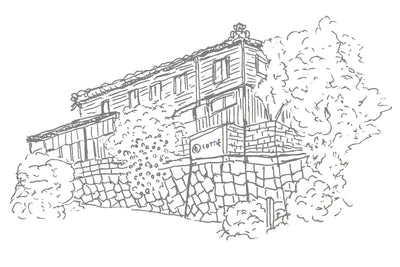EARTH WALL SOUAN STOLE / 4 COLORS
"SenkohSuiu" - EARTH WALL series -
Detailed explanation of
> EARTH WALL dictionary
<About EARTH WALL>
Fabric development begins with the selection of raw materials.
The inspiration for EARTH WALL comes from the mud wall at the entrance of our workshop built over 130 years ago.
When we renovated the entrance, plywood was removed, revealing a base wall underneath. Fascinated by its indescribably attractive color and texture, it was decided to keep the base wall as was.
"SenkohSuiu" expresses such an unexpected encounter and beauty in life through the senses of sight and touch, incorporating the element of craft art into its materials.
◎Once we have confirmed your order, we will begin manufacturing your garment.
As these items take a long time to produce, we will contact customers accordingly regarding the delivery date of the products.
[Size and detail]
SIZE F ( 90cm × 28cm )
[Details] -Specifications.
-Cashmere: 20%, wool: 23%, organic cotton: 57%.
-One hem section is tubular, and the stole can be threaded through that section to wrap around the neck.
[DYED] -Dyeing
< C/#STUCCO ECRU & C/#SOIL BROWN >
After moisturizing the surface of the fabric with steam by hand, it is tumbler dried at about 71℃ to maximize the texture of the material.
< C/#AUTHENTIC INDIGO >
After dyeing using the most traditional indigo-dyeing technique from ancient times using indigo leaves and lye, we apply a special natural dyeing technique that has a higher colorfastness (colorfastness, lightfastness) than usual.
Since all the dyeing is done by hand, unevenness and color pooling may occur in some areas.
Please consider only those who can understand the texture of the dyeing.
< C/#SUOH >
Sappanwood (Caesalpinia sappan L.) is a small tree of the blister family native to India, growing wild in tropical regions such as Malaysia and India. A similar species, brazilwood (Caesalpinia echinata) from eastern Brazil, is also used for dyeing. The core wood of these trees contains bradyrin, a precursor of red pigment, and has been used to dye red and other colors.
In Japan, it was introduced from China in the Asuka period (710-794) and was a very valuable dye favored by the nobility in the Heian period (794-1185). As shown in the Enki Shiki, a style of ceremony compiled in the middle of the Heian period, it was also used for clothing worn by the emperor for the "coronation ceremony.
[COLOR] -4 colors
・ STUCCO ECRU
・ SOIL BROWN
・ SUOH (sappanwood dye (red in colour))
・ AUTHENTIC INDIGO (natural indigo dye)
[ TOPS & BOTTOMS ]
SIZE0 (WOMAN S)
SIZE1 (WOMAN M & MAN S)
SIZE2 (WOMAN L & MAN M)
SIZE3 (MAN L & Overseas size M)
SIZE4 (MAN LL & Overseas size L)
[ COAT ]
SIZE1 (WOMAN S-M & MAN S)
SIZE2 (WOMAN L & MAN M)
SIZE3 (MAN L-LL & Overseas size M-L)
[ DENIM ]
SIZE 0 (28in)
SIZE 1 (30in)
SIZE 2 (32in)
SIZE 3 (34in)
SIZE 4 (36in)
SIZE 5 (38in)
SIZE 6 (40in)
How do you ship packages from Japan to overseas?
Normally, we use the international mail service (EMS).
However, as part of our current measures against coronavirus, we have decided to use [FedEx & DHL] in order to deliver products faster and more safely.
Please be assured that when we ship products from Japan to overseas, we will inform you of the shipping details via e-mail as usual.
We want our customers to feel comfortable wearing clothes that are the right size for them.
This is because all our clothes are made in our own atelier after we receive the order. This means that you can return or exchange your garments.
(Click here to see the COTTLE US )
If you have any questions about the size of the garment you wish to purchase, please feel free to contact us and we will let you know the size we recommend for you.
Thank you
Toshi













